When it comes to the world of Asian cuisine, two sauces often spark curiosity and confusion: teriyaki sauce and soy sauce. Both staples in Japanese cuisine and found in grocery stores worldwide, these sauces bring unique flavors and textures to dishes. But are they the same? Can one be used as a substitute for the other? Let's unravel the mysteries of these popular sauces and how they differ, not just in taste but in their culinary uses.
Jump to:
- What is Teriyaki Sauce?
- Origin and Making of Teriyaki Sauce
- What is Soy Sauce?
- Origin and Making of Soy Sauce
- Differences Between Teriyaki and Soy Sauce
- Can You Use Them As Alternatives?
- When to Use Each Sauce
- Substituting Teriyaki Sauce for Soy Sauce
- Storage and Shelf Life
- Recipes and Dishes
- FAQ
- Conclusion
- Related
- Cooking Guides
- 💬 Reviews
What is Teriyaki Sauce?
Teriyaki sauce is a cornerstone of Japanese cooking, tracing its origins back to the 17th century. The word 'teriyaki' derives from the Japanese terms 'teri,' meaning luster, and 'yaki,' indicating the cooking style. This sauce is known for its glossy, reddish-brown color and sweet flavor, resulting from its common ingredients: soy sauce, brown sugar, garlic powder, rice wine vinegar, and sometimes, cornstarch slurry to achieve that thicker consistency.
Origin and Making of Teriyaki Sauce
The traditional teriyaki sauce started as a simple mixture of soy sauce and sugar. Over time, this evolved into more complex versions, including ingredients like ginger, garlic, and honey or brown sugar, creating that unique taste of teriyaki sauce. Homemade teriyaki sauce recipes often include these essential ingredients simmered over medium heat to blend the flavors and thicken the sauce.
What is Soy Sauce?
Soy sauce, a pivotal ingredient in many Asian cuisines, including Chinese and Thai, has a history that spans over three millennia. It's a fermented concoction of soybeans, wheat, salt, and water. This fermentation process imparts a salty taste to the sauce, with different types of soy sauce (like light soy sauce, dark soy sauce, and sweet soy sauce) offering different flavor profiles.
Origin and Making of Soy Sauce
Originating from ancient China, soy sauce has become a global pantry staple. The traditional cooking method involves fermenting soybeans with a type of mold (Aspergillus oryzae) and then adding grains, salt, and water. The mixture is left to ferment for a period, resulting in a sauce that's a perfect balance of salty and umami flavors.
Differences Between Teriyaki and Soy Sauce
While at first glance, teriyaki and soy sauce might look similar with their dark brown hues, their differences are quite significant:
- Flavor Profile: Soy sauce is predominantly salty with a hint of umami, while teriyaki sauce offers a balance of sweet and savory flavors.
- Consistency: Soy sauce is thinner, while teriyaki sauce has a thicker consistency, often achieved by adding a cornstarch slurry.
- Ingredients: Soy sauce is simpler, primarily made from soybeans and wheat, whereas teriyaki sauce includes additional ingredients like brown sugar, garlic, and ginger.
- Culinary Use: Soy sauce is versatile, as a base for various dishes, dipping sauce, and marinades. Teriyaki sauce is typically used as a glaze or marinade, especially for dishes like teriyaki chicken.

Can You Use Them As Alternatives?
While soy sauce forms the base of teriyaki sauce, using them interchangeably can lead to distinct differences in your dish. For instance, adding teriyaki sauce instead of soy sauce in a recipe that calls for a salty flavor can result in an unexpectedly sweet outcome. However, if you're in a pinch and need teriyaki sauce, you can create a quick version by adding brown sugar and garlic powder to soy sauce, and simmering it into a thicker sauce.
When to Use Each Sauce
- Teriyaki Sauce: Ideal for glazing or marinating meats like chicken, beef, and fish. It pairs wonderfully with dishes like our Huli-Huli Homemade Sauce Recipe for Chicken.
- Soy Sauce: Perfect for stir-fries, marinades, and as a condiment. It adds depth to dishes like our Stir Fry Beef with Sriracha Sauce and Beef Stir Fry with Broccoli.
Substituting Teriyaki Sauce for Soy Sauce
If you need to substitute teriyaki sauce for soy sauce, remember the sweetness and thicker consistency of teriyaki. It might not be ideal in recipes where a salty, umami flavor is required. However, for a homemade teriyaki sauce, combine equal parts soy sauce and brown sugar, adding a touch of garlic powder and ginger for that authentic flavor.
Storage and Shelf Life
Both sauces should be stored differently. Soy sauce, due to its high sodium content, can be kept at room temperature and has a long shelf life. In contrast, with its higher sugar content, homemade teriyaki sauce is best stored in the refrigerator and used within a few days for best results.
Recipes and Dishes
Both sauces are incredibly versatile. Use soy sauce in stir-fries, as a dipping sauce, or to add a savory note to dishes. Teriyaki sauce is the star in recipes like teriyaki chicken, where its glossy, sweet glaze is showcased. I love using these sauces to bring out the rich flavors in our Asian Fusion dishes.
FAQ
Absolutely! Mix soy sauce, brown sugar, ginger, garlic, and a cornstarch slurry over medium heat for a simple, homemade teriyaki sauce.
Yes, teriyaki sauce can be used in stir-fries, but it will impart a sweeter taste compared to soy sauce.
Teriyaki sauce is widely used in Japanese cuisine. Popular dishes include teriyaki chicken, teriyaki beef, and grilled teriyaki fish. It's also a favorite glaze for skewered meats and vegetables.
Absolutely! Teriyaki sauce is great for glazing tofu, tempeh, and various vegetables. It adds a rich, sweet-savory flavor to stir-fried veggies and grain bowls.
Light soy sauce is more common and versatile, balancing saltiness and flavor. It's ideal for seasoning, marinating, and cooking. Dark soy sauce, on the other hand, has a sweeter, more intense flavor and a thicker consistency. It's typically used for adding color and a rich taste to dishes.
Homemade teriyaki sauce often has a fresher taste and allows you to adjust the sweetness, saltiness, and thickness to your preference. Store-bought versions can vary in flavor and may contain preservatives or additives.
Yes, teriyaki sauce can be frozen. Freeze it in airtight containers or freezer bags for up to three months. Thaw in the refrigerator before use.
Yes, there are gluten-free soy sauces (often labeled as tamari or coconut aminos) and gluten-free teriyaki sauces available for those with gluten sensitivities or celiac disease.
Conclusion
While teriyaki and soy sauces may share some ingredients and origins, their distinct taste profiles, consistencies, and culinary uses set them apart. Understanding these differences will enhance your cooking and allow you to experiment confidently with Asian flavors. Whether you're whipping up a quick stir-fry or a slow-cooked teriyaki marinade, these sauces will surely add that special touch to your dishes. So, the next time you reach for that sauce bottle, remember each brings unique qualities to your culinary creations!
Related
Looking for recipes that use soy sauce? Try these:
Want more recipes? Go to recipe index to see other gourmet recipes sorted by category!
Cooking Guides
Here are some cooking guides you may find helpful:

Instructions
Flavor Profile
- Soy Sauce: Salty with a hint of umami.
- Teriyaki Sauce: Balance of sweet and savory.
Consistency
- Soy Sauce: Thinner
- Teriyaki Sauce: Thicker
Ingredients
- Soy Sauce: Soybeans and Wheat
- Teriyaki Sauce: Includes brown sugar, garlic, and ginger.
Culinary Use
- Soy Sauce: As a base for various dishes, dipping sauce, and marinades.
- Teriyaki Sauce: Used as a glaze or marinade.
If you make this recipe, post a photo using the hashtag #JOZmahal. Let's be taste buds and follow me on Facebook, Twitter, Instagram, and Pinterest.










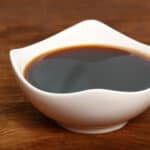


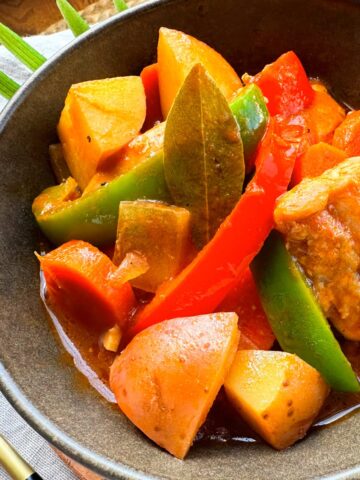
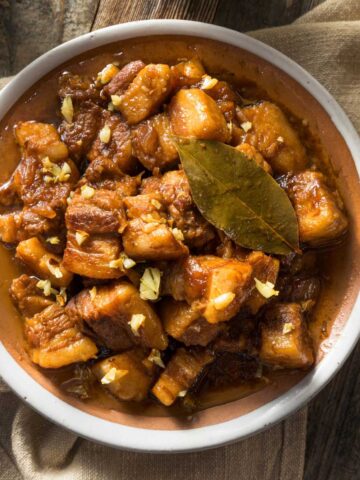


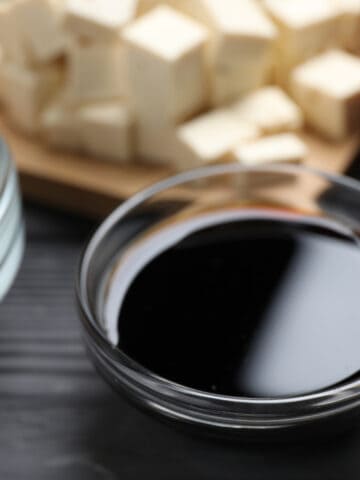
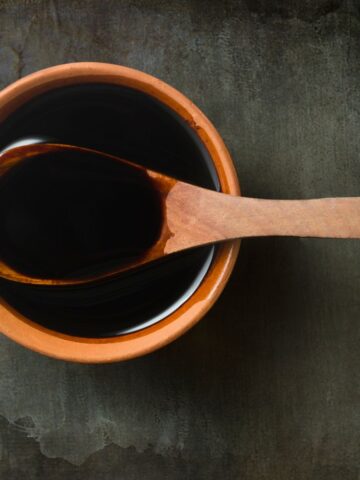
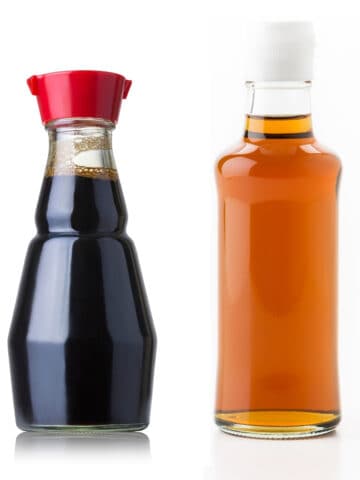

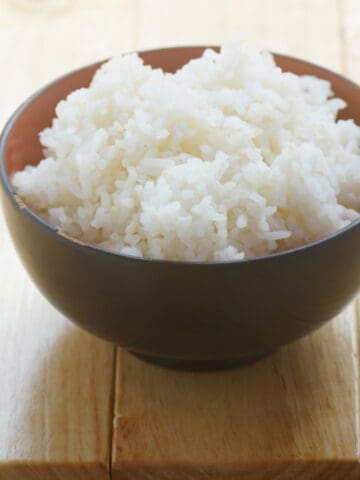




Comments
No Comments